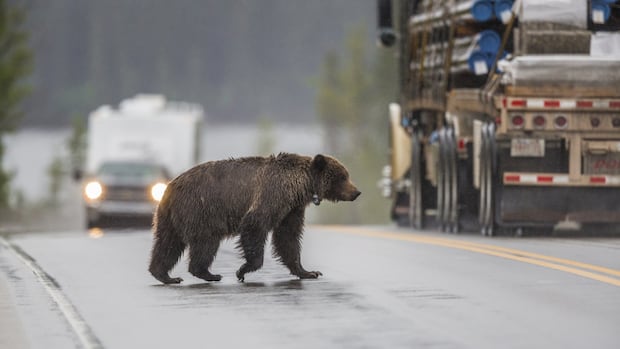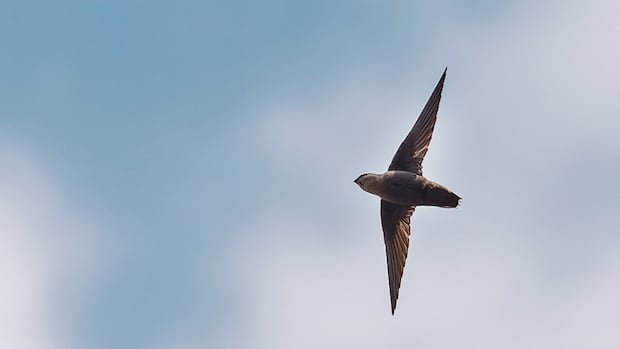A new exhibit is putting a few of the Royal Tyrrell Museum’s most game-changing specimens in the spotlight.
Breakthroughs, a collection of five ancient fossils, showcases everything from feathers on theropods to the feeding habits of tyrannosaurs, with these specimens representing only a small portion of the iconic Drumheller museum’s collection.
The exhibit serves to illustrate “the literal breakthroughs in scientific discovery that we’ve made at this institution,” said Lisa Making, the museum’s executive director.
“We really want to highlight what makes Alberta such a unique place for paleontology in the world, but also what the Royal Tyrrell Museum has done over the last 40 years in elevating the science of paleontology around the world,” she said.
Five groundbreaking fossils
Picking only five of the museum’s many specimens, the majority of which aren’t even on display, was a challenging task, said Craig Scott, director of preservation and research at the Royal Tyrrell Museum.
Ultimately, the team narrowed the focus of Breakthroughs on fossils from the Cretaceous period, spanning from approximately 143 million years ago to the extinction of the dinosaurs around 66 million years ago.
“This highlights a very specific period of time, which happens to be the best represented period of time in the province,” said Scott, who holds a doctorate from the University of Alberta. “We’re lucky to have such great representation from this time, and so these specimens represent the very best of that time.”
The exhibit’s only non-dinosaur specimen is a mosasaur, a large marine carnivore that may be familiar to fans of the Jurassic World film series.

The exhibit showcases a young Mosasaurus missouriensis so well-preserved that even its cartilage, typically too soft to be fossilized, and its last meal, large fish bones, were left behind after the animal’s death around 75 million years ago.
“The specimen is exquisite, the preservation unbelievable,” said Scott.
A fossilized Ornithomimus, an ostrich-like theropod, is another eye-catching element of the exhibit.
The fossil, found in Dinosaur Provincial Park in 1995, was so well-preserved that technicians were able to find evidence of feathers on the animal’s arms.

“It represents the first North American dinosaur to show evidence of feathers,” said Scott.
Proving that bipedal dinosaurs like Ornithomimus had feathers helped further bridge the gap between birds and dinosaurs.
“These animals likely have feathers on their forelimbs,” said Scott. “Those were obviously not being used for flight, these are far too big. They were probably used for signalling mates like you see in modern birds.”
Scott considers Borealopelta markmitchelli, an armoured herbivore that lived 110 million years ago, the crown jewel of the exhibit.
WATCH | Albertan ankylosaur is the world’s most well-preserved armoured dinosaur:
Borealopelta fossilized so perfectly that we can see every inch of its armour and skin in 3D, 110 million years after its death.
Upon being unearthed in 2011, the Fort McMurray fossil made waves worldwide — and is still being studied — for the remarkable circumstances under which it was preserved.
“The conditions at the time of death had to be perfect,” said Scott.
The dinosaur, which most likely washed out to sea after its death and was quickly buried on the sea floor, was so well-preserved that vegetation and even charcoal were found in its stomach.
“Most importantly, it had to be covered up very, very quickly with sediment, before it could be scavenged and its remains disarticulated,” said Scott, emphasizing the one-of-a-kind nature of this particular fossil.
Rounding out the exhibit is a nesting site uncovered in 1987 that contains the eggs of a herbivorous dinosaur called Hypacrosaurus stebingeri — eggs in which embryos were found preserved — and the remains of a young Gorgosaurus libratus, which upon its discovery in 2009 was the first tyrannosaur to be found with prey still preserved in its digestive system.
Museum continuing to make an impact
Boasting a collection of over 160,000 fossils and geological specimens, the Royal Tyrrell has been considered a must-visit destination by dinosaur enthusiasts across the world since it opened in 1985.
One such person, Roger Palmer, visited the museum as part of a trip from the United Kingdom.

“We have an area there called the Jurassic Coast, which is famous for its fossils, but this completely outclasses anything that you can see there,” said Palmer.
He had flown to Canada to visit family in B.C., but found himself headed to southeastern Alberta to experience the unveiling of Breakthroughs at the Royal Tyrrell on Friday.
“I didn’t have the faintest idea that there was this incredible richness of history here, that the depth, the quality and the quantity of what you see here just takes your breath away,” said Palmer.
It’s those kinds of responses that Making hopes to hear from visitors for a long time.
“Forty years is a remarkable milestone, but as humans, we look at it as middle-aged,” she said.
She sees much room for growth for the Royal Tyrrell, particularly around improved infrastructure and expanding the organization’s footprint.
“When we were built, nobody anticipated we’d be welcoming half a million visitors from 150 countries,” she said. “So we’re at capacity with our collection, with our visitors. We want to grow and accommodate and continue to show off the remarkable resources that are here in the province.”
With approximately 2,500 specimens added to the museum’s collection last year alone, the museum is monitoring its growth and looking at how to best continue providing its programming to visitors from around the world.
Handling that growth remains a challenge for the museum’s team, but to Making it’s worth it.
“The moment you come down into the galleries and you start watching people, you start interacting with people, you see kids and the look of wonder on their faces and the excitement,” she said. “It just renews that passion and reinforces the joy of the work that we get to do here every day.”







